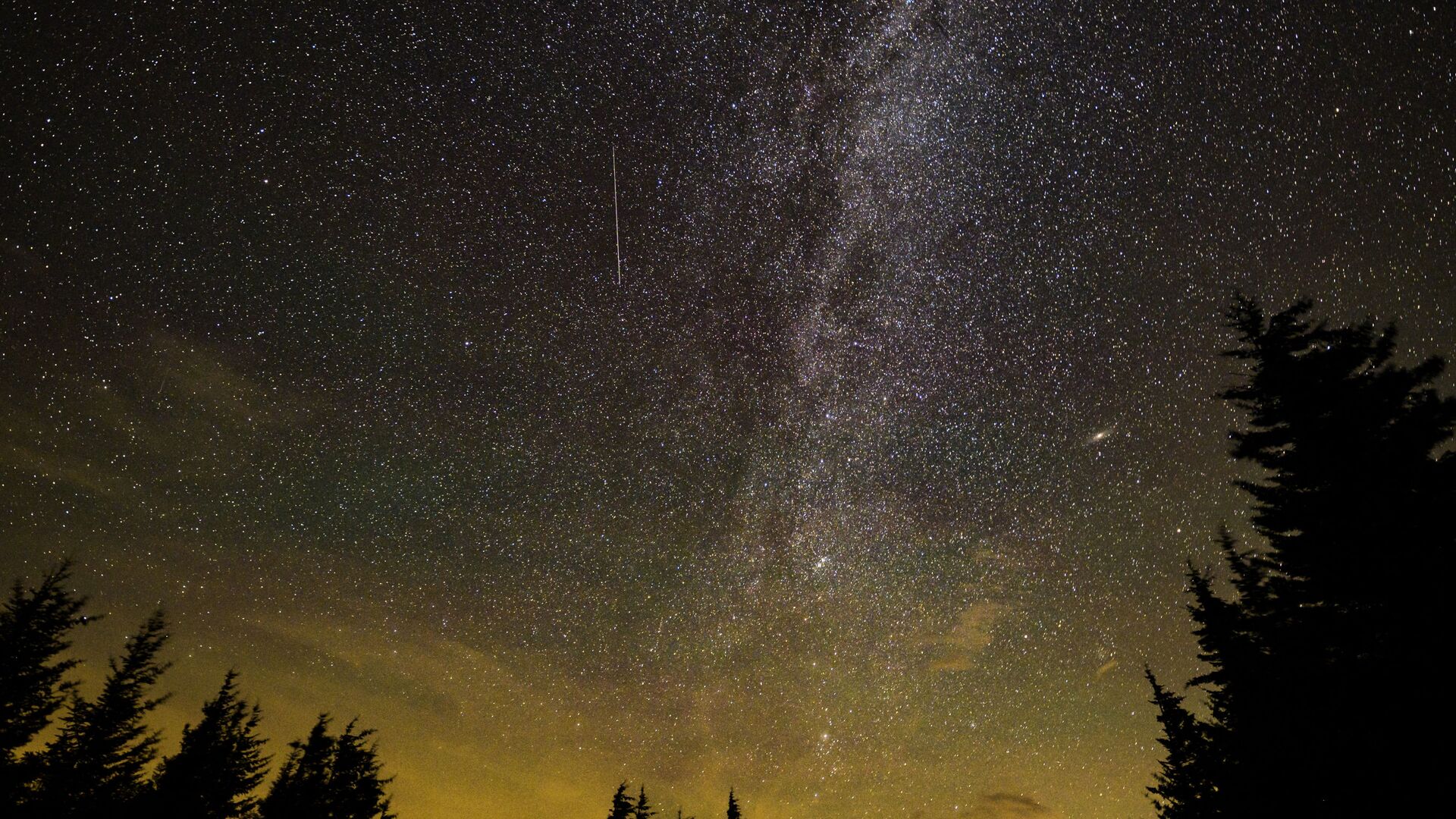https://sputnikglobe.com/20210928/night-of-the-perseids-nasa-showcases-meteor-shower-captured-over-ladakh-in-india-1089484181.html
'Night of the Perseids': NASA Showcases Meteor Shower Captured Over Ladakh in India
'Night of the Perseids': NASA Showcases Meteor Shower Captured Over Ladakh in India
Sputnik International
Dorje Angchuk entered the limelight after becoming the first and, so far, only Indian to hold the post of honorary member of the International Astronomical... 28.09.2021, Sputnik International
2021-09-28T15:05+0000
2021-09-28T15:05+0000
2022-07-19T10:39+0000
ladakh standoff
meteor
comet
https://cdn1.img.sputnikglobe.com/img/07e5/08/0c/1083588830_0:262:2709:1786_1920x0_80_0_0_dd675c5b7e815e3a4cc6b7e76bdf1d6e.jpg
A video of a meteor shower above India's Astronomical Observatory in Ladakh by Indian engineer Dorje Angchuk was named 'Astronomy Picture of the Day' by NASA on Tuesday. Titled 'Night of the Perseids', the video captures the prolific meteor shower, related to comet Swift Tuttle. Its name refers to the point from which they appear to hail, as it lies in the Perseus constellation - one of the largest in the sky. Angchuk works at the Indian Astronomical Observatory in India's Ladakh union territory, which at 4,500m (14,764 ft) is one of the world's highest sites for optical, infrared and gamma ray telescopes. It is in Hanle, a large village in the area known for its rich history and culture. Operated by the Indian Institute of Astrophysics, Bengaluru, it is the ninth highest optical telescope in the world.Revealing that it took him years of practice to understand how the meteors could best be captured, Angchuk said: "And even then it is a matter of chance that your camera is able to capture these." Even for amateur observers who are not equipped with cameras or telescopes, one can still see about 60 meteors in an hour with the naked eye in Hanle , Angchuk revealed. He also said that this specific meteor shower was more visible than others because the moon's light had not brightened the sky and it was still very dark.
ladakh standoff
Sputnik International
feedback@sputniknews.com
+74956456601
MIA „Rosiya Segodnya“
2021
Priya Yadav
https://cdn1.img.sputnikglobe.com/img/07e5/02/01/1081944855_0:29:2048:2077_100x100_80_0_0_fcca548f1670eac15afebf8b8e336044.jpg
Priya Yadav
https://cdn1.img.sputnikglobe.com/img/07e5/02/01/1081944855_0:29:2048:2077_100x100_80_0_0_fcca548f1670eac15afebf8b8e336044.jpg
News
en_EN
Sputnik International
feedback@sputniknews.com
+74956456601
MIA „Rosiya Segodnya“
Sputnik International
feedback@sputniknews.com
+74956456601
MIA „Rosiya Segodnya“
Priya Yadav
https://cdn1.img.sputnikglobe.com/img/07e5/02/01/1081944855_0:29:2048:2077_100x100_80_0_0_fcca548f1670eac15afebf8b8e336044.jpg
ladakh standoff, meteor, comet
ladakh standoff, meteor, comet
'Night of the Perseids': NASA Showcases Meteor Shower Captured Over Ladakh in India
15:05 GMT 28.09.2021 (Updated: 10:39 GMT 19.07.2022) Dorje Angchuk entered the limelight after becoming the first and, so far, only Indian to hold the post of honorary member of the International Astronomical Union, joining a select list of 20 international experts. He was recognised because of "his passionate promotion of astronomy in the Ladakh region through his excellent astrophotography".
A video of a meteor shower above India's Astronomical Observatory in Ladakh by Indian engineer Dorje Angchuk was named 'Astronomy Picture of the Day' by NASA on Tuesday.
Titled 'Night of the Perseids', the video captures the prolific meteor shower, related to comet Swift Tuttle. Its name refers to the point from which they appear to hail, as it lies in the Perseus constellation - one of the largest in the sky.
"The Perseids meteor shower is visible from mid-July each year and I clicked these pictures over a period of five days in the month of August. The very dark sky in Hanle [a large historic town in Ladakh] and high elevation helped me to get a clearer view of the shower," Angchuk told Sputnik on Tuesday.
Angchuk works at the Indian Astronomical Observatory in India's Ladakh union territory, which at 4,500m (14,764 ft) is one of the world's highest sites for optical, infrared and gamma ray telescopes. It is in Hanle, a large village in the area known for its rich history and culture.
Operated by the Indian Institute of Astrophysics, Bengaluru, it is the ninth highest optical telescope in the world.
Revealing that it took him years of practice to understand how the meteors could best be captured, Angchuk said: "And even then it is a matter of chance that your camera is able to capture these."
"I did not sleep the entire night when we took these pictures. We had a number of cameras pointing to the sky and it was sheer luck that we could capture the meteor shower in all its glory,'" he added.
Even for amateur observers who are not equipped with cameras or telescopes, one can still see about 60 meteors in an hour with the naked eye in Hanle , Angchuk revealed.
He also said that this specific meteor shower was more visible than others because the moon's light had not brightened the sky and it was still very dark.




